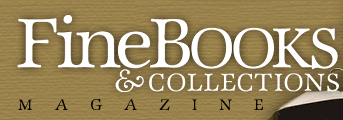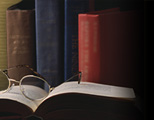| |
 |
 |
 |
|
BOOK REVIEWS
Flying Leaves and One-Sheets
 Pennsylvania German Broadsides, Fraktur, and Their
Printers Pennsylvania German Broadsides, Fraktur, and Their
Printers
By Russell and Corinne Earnest, with Edward L.
Rosenberry.
New Castle, DE:
Oak Knoll Press, 2005
352 pages. $95.00
ISBN 1584561459
The brightly reproduced llustrations are the most
obvious attraction of this book but another strong feature is the
structured documentation and background information on the page opposite
each photograph
 Within the large field of American book history,
there is a substantial and scarcely known tradition of ethnic German books
stretching from colonial times up through a rich nineteenth century, and
even into the present. The Ausbund, a hymnal compiled by sixteenth- century
European Anabaptists, would be printed frequently in southeastern
Pennsylvania in the eighteenth and nineteenth centuries and remained in
print as recently as 2000. It is still in active use
across the American continent by Amish
congregations that preserve a German dialect. German Bibles were printed
in America well before English versions, and even Benjamin Franklin tried to launch a
German newspaper in Philadelphia. Within the large field of American book history,
there is a substantial and scarcely known tradition of ethnic German books
stretching from colonial times up through a rich nineteenth century, and
even into the present. The Ausbund, a hymnal compiled by sixteenth- century
European Anabaptists, would be printed frequently in southeastern
Pennsylvania in the eighteenth and nineteenth centuries and remained in
print as recently as 2000. It is still in active use
across the American continent by Amish
congregations that preserve a German dialect. German Bibles were printed
in America well before English versions, and even Benjamin Franklin tried to launch a
German newspaper in Philadelphia.
Yet so specialized is this subject within American
culture that it has repeatedly required the investment of foreign academics
to enumerate the extensive output of German American presses. Not
until 1989 was there a truly comprehensive
bibliographic guide to the early
printing of Pennsylvania
Germans, The
First Century of German Language Printing in the United States of America.
And it was published under the auspices of the University of Göttingen,
Germany, with the cooperation of the Pennsylvania German Society.
Altogether untouched by this magnificent two-volume
achievement, however, was a less-tractable genre: German American broadsides
and other single-sheet publications. These ephemeral publications filled
an immediate need to publicize, to announce, to sell, to celebrate, or to
make a private record or memorial. In all likelihood, most of them have not
come down to us and are either unknown altogether or remembered only in some
stray reference. These one-sheet documents have also attracted attention
in Germany, and a third volume of that painstaking bibliography, just for early
German broadsides printed in
America, is in preparation.
At the same time all this German-based
industry has been under way, two Americans, Russell and Corinne Earnest,
have been immersed in the subject. This consuming interest resulted in a
finely illustrated study that offers insights into a substantial, locally
based publishing enterprise that reached from New York to Virginia and westward
through Pennsylvania, Ohio, and adjacent states. Flying Leaves and
One-Sheets is the culmination of decades of
study and consultation with public and academic librarians, book dealers,
collectors, antiquarians, and specialized scholars. It offers for the first
time a general understanding of the kinds of publications the field encompasses and
suggests the ways these works functioned in the German-speaking societies.
It contributes some initial speculations as to how the printers and other
professionals—including scribes and illuminators—carried on
their trades. It also provides a stepping-off point for further scholarly
speculation and interpretation, as the objects to be considered are cataloged
and enumerated.
This book is of special interest to collectors.
The brightly reproduced illustrations are its most obvious attraction, but
another strong feature is the structured documentation and background information
on the page opposite each photograph. The Earnests render a special service
by displaying numerous pieces from private collections that would otherwise
remain unseen. The volume provides a framework for understanding of a diverse
and heretofore scarcely delineated realm of printing and cultural history.
The objects shown range from ready-to-color
emblems of Christian piety to sensationalistic stories of murder and execution.
The most widely known broadsides, birth and baptism certificates, are perhaps
the most illustrative of the arts of scribes (who filled in blank forms with
names, dates, and places) and colorists (who painted in the figures and designs
often printed in outline on certificates). The authors also provide essential
definitions, explaining
for example that Fraktur is both a German typeface and the
name applied to calligraphic certificates decorated in the Pennsylvania
German tradition.
The Earnests’ book brings into clear focus one of
the most abstruse categories of broadside, the “spiritual
maze,” through three examples from Pennsylvania and Indiana. These
mysterious documents demonstrate an advanced exercise in the
typesetter’s art, presenting a
labyrinthine text that must be turned repeatedly to be read. Biblical
verses and moral lessons illustrating the path of a Christian life are the
reward for the reader of this genre.
An entirely different focus is brought by the
propaganda broadside, represented by a warning of atrocities committed
by Hessian soldiers in Bucks County, Pennsylvania, during the Revolution.
Also treated are German broadside editions of the Declaration of Independence. No
less striking, however, are the mysterious printed charms and house blessings
that aimed at instilling harmony or protecting the family against danger.
There are even examples of very rare early woodcut and type specimen sheets.
The notes and bibliographical citations demonstrate
the Earnests’ considerable familiarity with
literature in local and printing history. The usefulness of the book
is much increased by a thorough index of names and genres, and English translations
of titles and imprints make the descriptions entirely accessible.
The excitement that should be generated by this
book may be heightened by the announcement of another new book on the
Pennsylvania German broadside, from
the Library Company of Philadelphia. The understanding and appreciation of
these fragile, native art forms can only increase.
|
|
|
